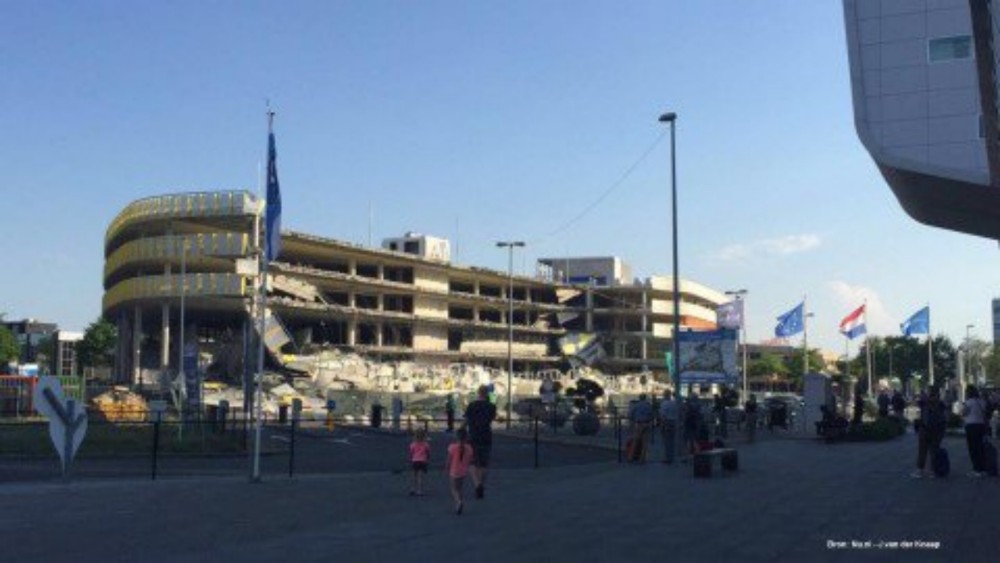Last year, on 27 May, a section of the car park at Eindhoven Airport collapsed. The building was near completion and was set to be put into use just a month later.
Subsequently, the Dutch Safety Board carried out an investigation into the cause of this disaster. Today, they published the results of this investigation. The floor slabs were laid in a non-standard way. “The decision in the design to turn the floor slabs means resulted in the seams between the slabs being in the place where the floor sags most”, reads the summary.
“Extra attention should have been paid to the design of the seams between the floor slabs. However, this was not done. As a result, the seam reinforcement was too short.” The Dutch Safety Board Board, which is an independent organisation, states that no due consideration was given to the consequences of laying these floor slabs in an unconventional way.
“The Board notes that the construction sector is still failing to adequately and structurally manage the safety risks involved in construction projects”, reads the statement. The Board revealed that there was no central party overseeing the risks for the overall construction process. This oversight was also the cause of incidents previously investigated by them.
Cracks were showing early on
The Board goes on to say that there were clear indications of failing structural safety early on. These were present during the tendering process and implementation phase. These issues included the formation of cracks and puddles. “At that time, none of the parties saw these signs as a reason to call the structural safety into question, although they could and, indeed, should have done so”, reads the report.
“The Board has highlighted the need to organise process responsibilities in its previous investigations, and has also made recommendations on this topic”, the report says. This kind of overall responsibility for safety has still not been put in place in the construction sector.
“The fact that at Eindhoven, as in previous construction incidents investigated by the Board, the lack of this overarching responsibility was one of the key explanations for the insufficient control of the safety risks.” This is a stark example of the urgency of implementing this recommendation.
When accidents or disasters happen, the Dutch Safety Board investigates why they occurred. The aim of these investigations is to learn lessons for the future, and, ultimately, improve safety in the Netherlands. Its investigations do not address issues of blame or liability.
Source and photo: Onderzoeksraad
















